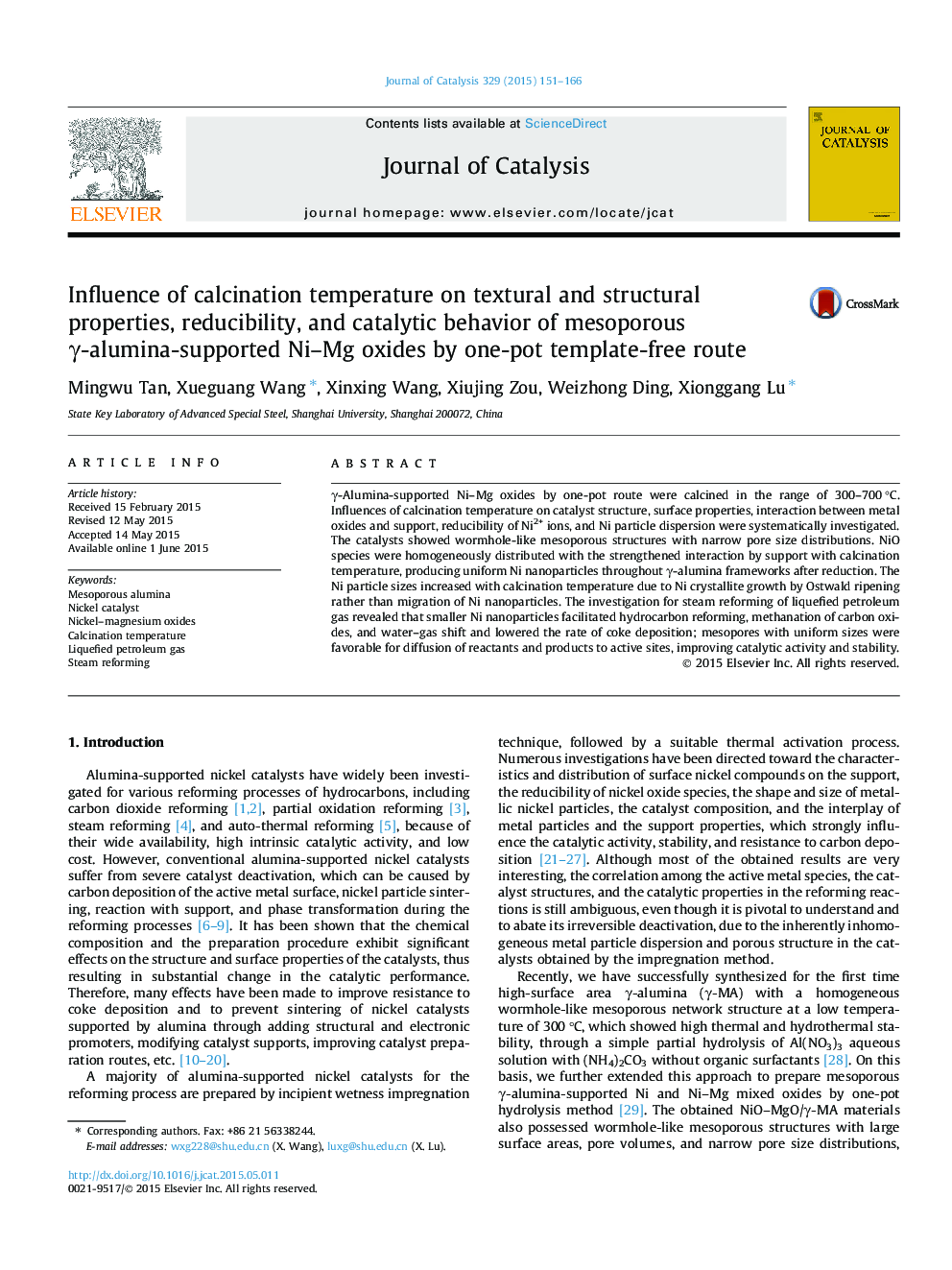| کد مقاله | کد نشریه | سال انتشار | مقاله انگلیسی | نسخه تمام متن |
|---|---|---|---|---|
| 60804 | 47548 | 2015 | 16 صفحه PDF | دانلود رایگان |

• Influence of calcination temperature on γ-Al2O3-supported Ni–Mg oxides was studied.
• NiO species were uniformly distributed with the strengthened interaction by support.
• Formation of large Ni particles was due to crystallite growth by Ostwald ripening.
• Small Ni particles promoted steam reforming of LPG and lowered the coking rate.
• Mesopores with uniform sizes were favorable for access of reactants to active sites.
γ-Alumina-supported Ni–Mg oxides by one-pot route were calcined in the range of 300–700 °C. Influences of calcination temperature on catalyst structure, surface properties, interaction between metal oxides and support, reducibility of Ni2+ ions, and Ni particle dispersion were systematically investigated. The catalysts showed wormhole-like mesoporous structures with narrow pore size distributions. NiO species were homogeneously distributed with the strengthened interaction by support with calcination temperature, producing uniform Ni nanoparticles throughout γ-alumina frameworks after reduction. The Ni particle sizes increased with calcination temperature due to Ni crystallite growth by Ostwald ripening rather than migration of Ni nanoparticles. The investigation for steam reforming of liquefied petroleum gas revealed that smaller Ni nanoparticles facilitated hydrocarbon reforming, methanation of carbon oxides, and water–gas shift and lowered the rate of coke deposition; mesopores with uniform sizes were favorable for diffusion of reactants and products to active sites, improving catalytic activity and stability.
Figure optionsDownload high-quality image (72 K)Download as PowerPoint slide
Journal: Journal of Catalysis - Volume 329, September 2015, Pages 151–166